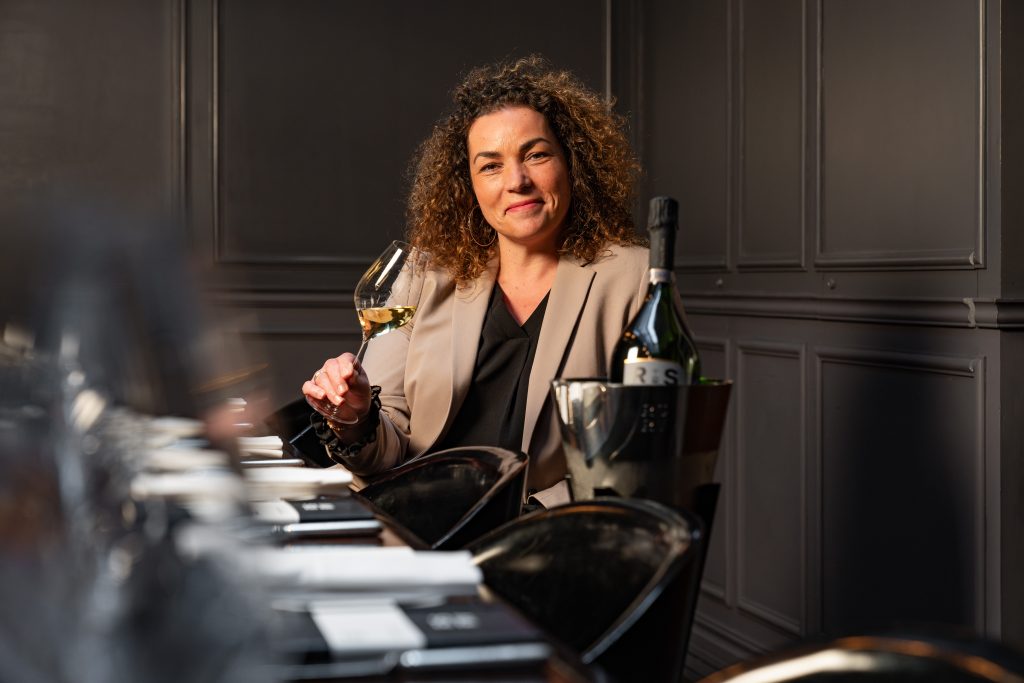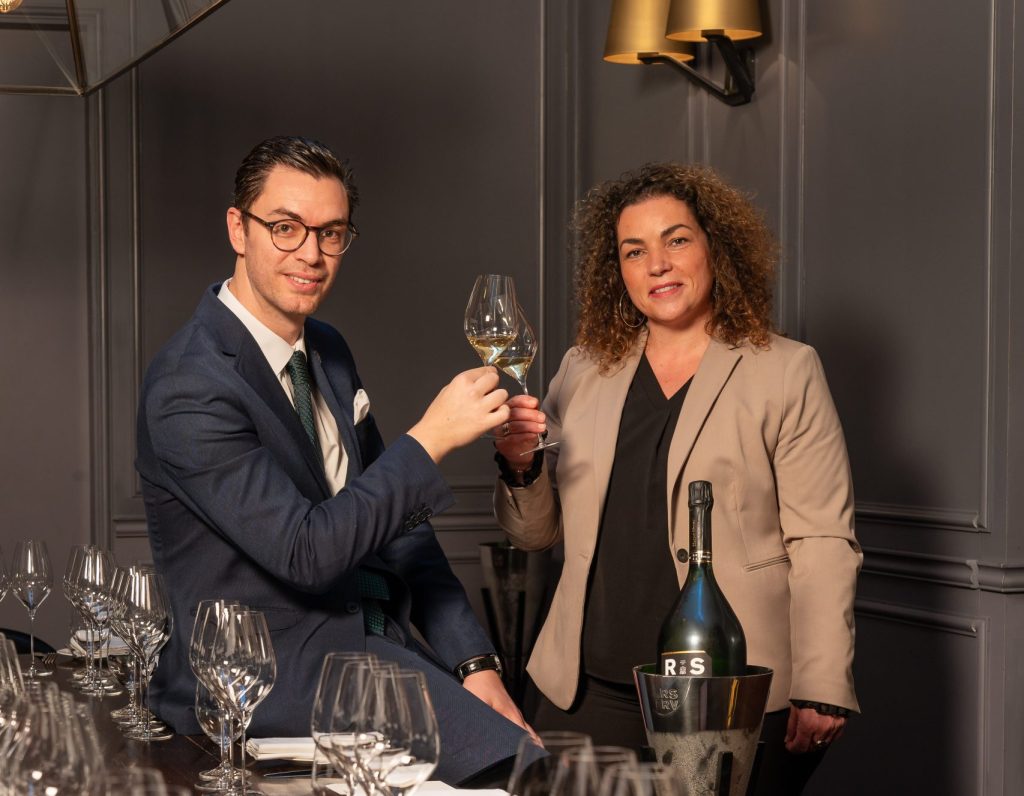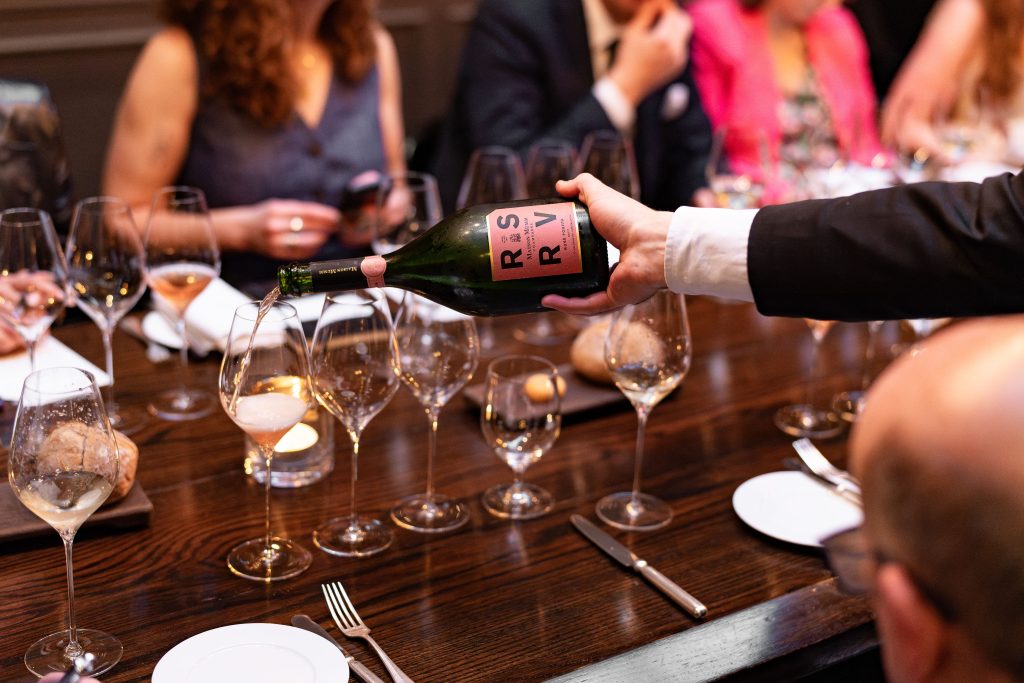This website uses cookies so that we can provide you with the best user experience possible. Cookie information is stored in your browser and performs functions such as recognising you when you return to our website and helping our team to understand which sections of the website you find most interesting and useful.
RSRV celebrates its ‘incredibly gastronomic range’
Maison Mumm has celebrated its RSRV range, with a recent dinner to celebrate the gastronomic qualities of its ultra-premium wine range. Arabella Mileham reports.

At its core, the cuvées of RSRV epitomise a single grape variety, a single terroir and a single year – combine with a long ageing.
The house’s motto has long been “Only the best” and RSRV epitomises this philosophy. The brand was borne in the late 19th century when Maison Mumm acquired vines in two Grand Crus with exceptional terroir. The first, at Cramant on the Côte des Blancs, has ideal terroir for Chardonnay, while Verzenay on the Montagne de Reims grows superior Pinot Noir. As a result, two small production cuvées were born, a Blanc de Blancs Mumm de Cramant, and Blanc de Noirs Mumm de Verzenay.
These two wines were reserved for family and friends – the story goes that a bottle of the Blanc de Blanc would be handed to friends in person along with a business card. If the recipient was absent, the upper right-hand corner of the card was turned down to indicate that it had been delivered in person to show respect. This tradition is still reflected in RSRV’s unique clipped labels, although the best wines are no longer just reserved for the family.
Currently, the cuvées in the RSRV range comprise: RSRV Blanc de Blancs 2015, The RSRV Blanc de Noirs 2008, RSRV 4.5 and RSRV Rosé Foujita, as well as the RSRV Renee Lalou.
“For me, it is an incredibly gastronomic range, as it reveals the terroir of Champagne, Cramant and the exposure of the vineyards – it produces wines with a lot of character,” new winemaker Sabrina Roussel explains.
Roussel originally worked with Mumm for six months following her oenology degree, she rejoined the Champagne house six months ago after 23 years at Champagne Pommery, which she described as an “long and incredible experience, working with the cellar master”.
The evening started with the 2012 Blanc de Blanc, from the exposed chalky soils of Cramant, a favoured location for Chardonnay production which offers “exceptionally fresh and incredibly elegant wines”, with aromas of white flowers, fresh fruit and citrus fruit.

“We wanted to show you the versatility of the wines,” Giuseppe D’Aniello, RSRV’s new brand ambassador pointed out.
An Italian native, D’Aniello is also the director of wine at The London Edition in Fitzrovia and was named as the Best Sommelier UK 2023 by the Sommelier Association. His appointment in January, the first time that RSRV has chosen an ambassador from the industry, is designed to elevate the brand’s presence and appeal in the luxury market, bringing his wide experience, an innovative approach and commitment to excellence that are “perfectly aligned with RSRV’s prestigious heritage” the company said.
Meanwhile the Blanc de Noir 2014 RSRV is a 100% Pinot Noir from Grand Cru vineyards in Vezenay, on the Montagne de Reims, which has benefited from six years on the lees.
As Roussel pointed out, the 2014 saw a very cold winter, followed by high temperatures during the summer, giving “grapes that were of a beautiful quality”. Although the wine went through malo-laction fermentation, a small percentage of non-malo was retained to give something “more straight”, she explained, and when it was disgorged, in May 2022 – “a long time, but it is the reason why is the good balance of sugar and acidity”, a little bit of oaked wine was added. “My opinion is that oak with liquor gives a little bit more complexity, it’s like when you add salt and pepper to your meal,” Roussel explained. The dosage was 6g/L.
The Rosé Foujita – named after influential Franco-Japanese artist Léonard Foujita, a family friend, is a rich, powerful rose with a good structure and acidity, a blend made from six different Grands Crus, terroirs that have belonged to Maison Mumm since 1840. These comprise Chardonnays from Cramant and Avize and Pinots Noirs from Aÿ, Bouzy and Vernezay, with the addition of around 15% of red wine from Ambonnay to bring out some power and roundness, along with red and black fruit aromas.

Using a base of the 2014, It is also the only Champagne of the Maison that is aged in oak, D’Aniello added with at least four years in the cellar.
“I love this wine, as it’s different,” Roussel said. “Generally, rosé is fresh with red fruits and something sweety, here you are on something with more structure. You are on Pinot Noir and its incredible when it’s a warm [vintage].”
The structure, she notes, is important to create the good acidity, while the Ambonnay lends an extra dimension. “I love Ambonnay, I think it is between Boizy, with its very strong and straight red wine, and Verzenay, which has more fruit.”
The full-bodied good structure and clean acidity saw it paired with yellowfin tuna tartar with a wasabi emulsion, daikon radishes, plum, Japanese dressing and seaweed cracker – an interesting pairing, but one that worked incredibly well, with the rose bringing out the orange notes of the dish.
As D’Aniello pointed out, many champagnes work with Asian food, but “you have to know Champagne to pair it with Asian food” – particularly the structure. Champagne and dessert he added was “very complicated”, but again, some orange or citrus notes made it work very well.
Next up was the famous cuvée of the RSRV range, Cuvée René Lalou 2008, “a very particular cuvee,” Roussel said, “Straight, strong, very complex and lots of structure.”
Only made in exceptional vintages, it is traditionally made from 12 historic, family-owned plots, although the 2008 vintage was blended from seven plots, with 50% Chardonnay from Aviz and Cramant and 50% Pinot Noir from Verzenay, Bouzy and Aÿ.
“Lalou represents the philosophy of the house, it is the best of the best we can produce,” D’Aniello says.
Oak is not used for the Lalou, as “we want to keep the freshness” and in terms of style and flavour, yellow apple and cooked vanilla comes through with secondary aromas, integrating brioche, biscuit and croissant, with a very long and complex finish.
“I think it drinks very well at the moment but it can age very well,” he added.
This was paired with a rump of Herdwick lamb rump, with melting smoked baba ghanoush, wild garlic leaf and an anchovies dressing, with the wine giving enough complexity to complement the lamb.
The final wine was another Blanc de Blanc, a “totally different wine”, with more minerality and precision, very different to the ripeness of the Lalou, D’Aniello noted.
The vintage Blanc de Blanc is not currently on the market (the younger 2015 is, however), consisting of 100% chardonnay from Cramant in the Cote de Blanc, southern exposure. It differs from some of its fellow cuvees’ as it has only 18g/L sugar rather than 25 making it a demi-mousse. As Roussel explained, this gives less pressure and there are more fine bubbles, more creaminess and more volume.
RSRV is available in the UK exclusively through the Whisky Exchange.

